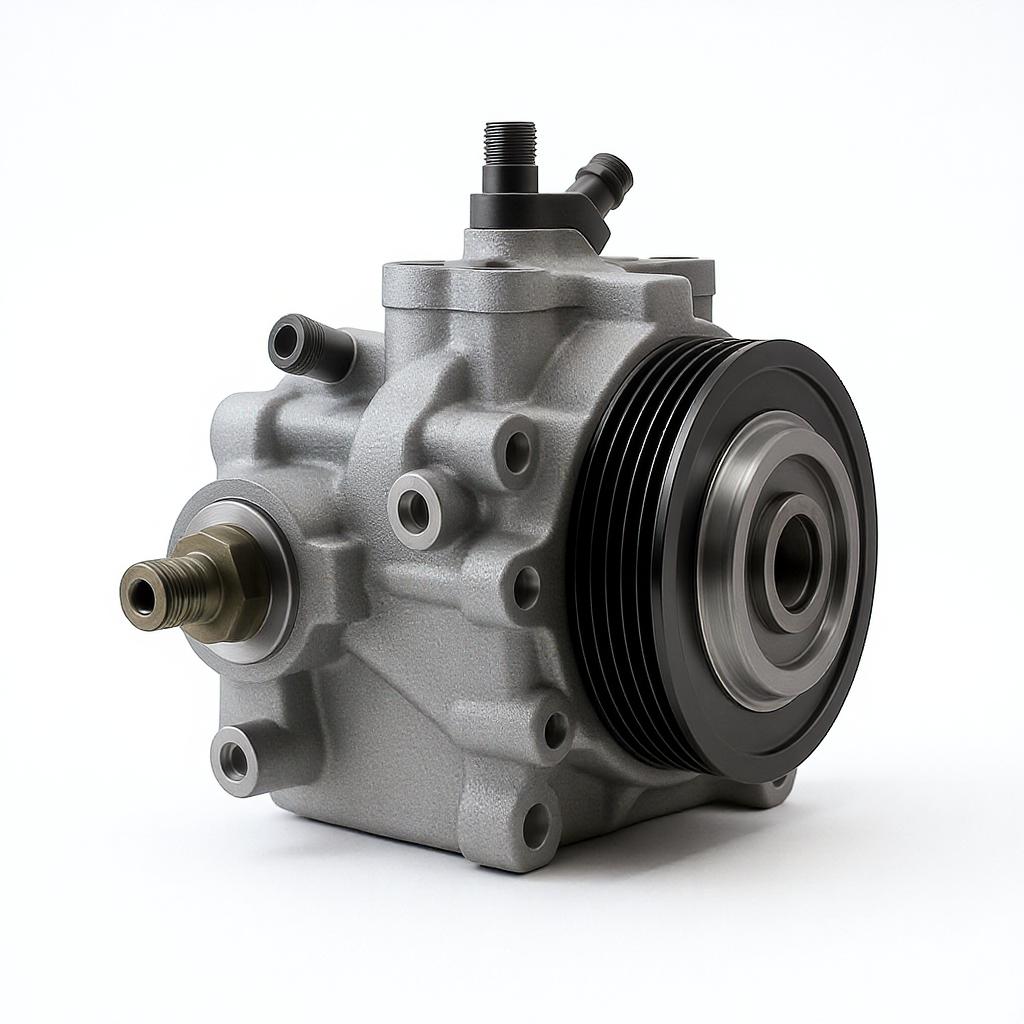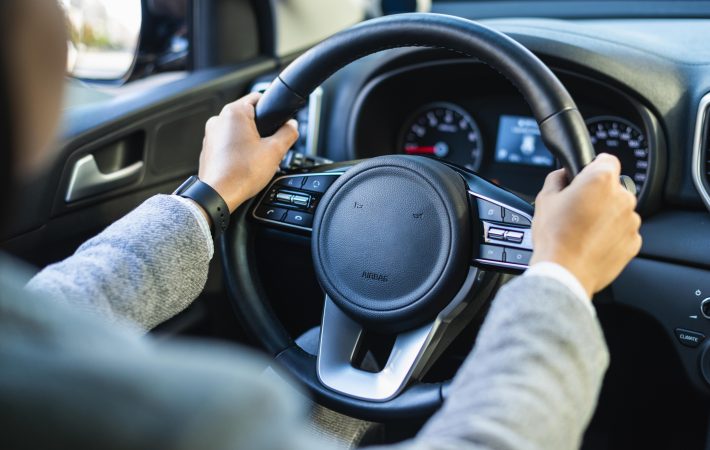The steering wheel is the primary interface between the driver and the road, so when something feels off—whether it’s vibration, stiffness, or misalignment—it can compromise both comfort and safety. Fortunately, most steering wheel problems have identifiable causes and manageable fixes, especially if addressed early.
This guide explores some of the most common steering wheel issues, their causes, and how to fix them, drawing from real-world auto repair insights, research studies, and automotive technical references.
1. Stiff or Hard Steering: When Turning Takes Effort
Symptoms: Resistance when turning the wheel, especially at low speeds or during parking maneuvers.
Possible Causes:
- Low power steering fluid: This is the most common issue. A leak in the system causes fluid loss, which reduces hydraulic pressure.
- Worn or loose serpentine belt: The belt drives the power steering pump; if it slips or is damaged, it affects pressure.
- Failing power steering pump: A malfunctioning pump won’t deliver adequate pressure for smooth turning.
- Damaged steering rack: Internal wear can cause binding or stiffness.
Fix:
- Check and top up power steering fluid. If fluid is low, inspect for leaks around the pump, hoses, or reservoir.
- Replace worn belts or tighten as needed.
- If the pump makes whining noises or steering remains stiff, replacement may be necessary.
- For electric power steering systems, a diagnostic scan may reveal sensor or motor failures.
According to Chrysler Service Manual (2015), over 60% of stiff steering complaints are resolved by correcting fluid levels or belt tension. For electric systems, diagnostic tools such as OBD-II scanners are essential for pinpointing control module faults.
2. Steering Wheel Vibration: The Shaky Wheel Syndrome
Symptoms: Noticeable shaking of the steering wheel, especially at specific speeds or during braking.
Possible Causes:
- Unbalanced or worn tires: Tires that are improperly balanced can send vibrations up through the steering column.
- Warped brake rotors: If vibration occurs during braking, warped rotors are likely the cause.
- Worn suspension components: Loose tie rods or ball joints allow excessive play in the steering system.
- Bent rims or damaged CV joints: More serious structural issues can cause continuous vibration.
Fix:
- Have tires balanced and rotated regularly. If tread wear is uneven, an alignment may be needed.
- Inspect brake rotors and pads; replace or resurface rotors if warped.
- Check suspension components for looseness or damage and replace worn parts.
- For persistent vibrations, a professional inspection is recommended to rule out axle or wheel hub damage.
A study by SAE International (Sato et al., 2016) found that tire-related issues accounted for nearly 75% of vibration complaints in vehicles under five years old. Regular tire maintenance can often resolve these problems early.
3. Off-Center Steering Wheel: When Straight Isn’t Straight
Symptoms: The steering wheel isn’t centered when driving straight, or the car drifts to one side.
Possible Causes:
- Wheel misalignment: Caused by hitting potholes, curbs, or from normal suspension wear over time.
- Suspension damage: Bent control arms, tie rods, or struts can throw off alignment.
- Steering column or rack shift: After an accident or improper repairs.
Fix:
- Perform a professional four-wheel alignment. This ensures the camber, caster, and toe angles are within factory specifications.
- Replace any bent or damaged suspension components before aligning.
- If misalignment persists after alignment, check for a shifted steering rack or improperly installed steering shaft.
According to Hunter Engineering (2020), vehicles should undergo alignment every 10,000 to 12,000 miles or annually—more frequently if driven on rough terrain.
4. Loose or Wobbly Steering Wheel: Loss of Precision
Symptoms: Steering feels vague, with excessive play or delayed response.
Possible Causes:
- Worn tie rod ends or ball joints: These link the wheels to the steering mechanism. If loose, they reduce responsiveness.
- Steering rack wear: Internal rack play can cause sloppiness.
- Loose steering column or universal joint: Mechanical slack anywhere in the column can lead to wobble.
Fix:
- Inspect and replace any worn joints or bushings in the suspension and steering system.
- Tighten steering column bolts or replace the intermediate shaft if play is present.
- If rack play is confirmed, replacement of the rack-and-pinion assembly is often the most effective solution.
Federal-Mogul Technical Bulletin (2018) suggests that even 1/8 inch of play in a tie rod can result in over an inch of wheel movement—a significant safety hazard if unaddressed.
5. Faulty Steering Wheel Controls: Buttons That Don’t Work
Symptoms: Audio, cruise control, or phone buttons on the steering wheel are unresponsive or intermittently functional.
Possible Causes:
- Worn or broken clockspring: The clockspring is a rotary electrical connector inside the steering column that maintains continuity as the wheel turns.
- Disconnected wiring harness: Especially if the steering wheel was recently removed or replaced.
- Control module failure: In rare cases, the vehicle’s body control module (BCM) may be the issue.
Fix:
- Replace the clockspring if buttons fail completely, especially if the airbag light is also illuminated.
- Check for loose connectors or damaged wires beneath the steering column shroud.
- Use diagnostic tools to scan for error codes related to BCM or steering control modules.
Bosch Automotive Handbook (10th ed., 2018) emphasizes that clockspring failure is a leading cause of steering wheel button malfunctions, particularly in vehicles over 8 years old or with high mileage.
6. Noise When Turning the Wheel
Symptoms: Clicking, grinding, or whining sounds while turning.
Possible Causes:
- Low power steering fluid or air in the system
- Worn CV joints (especially in front-wheel-drive vehicles)
- Loose steering components or failing bearings
Fix:
- Bleed the power steering system to remove air bubbles.
- Replace or lubricate worn CV joints and check steering rack bushings.
- If grinding persists, a full steering system inspection is necessary.
Noise often accompanies more serious wear issues. According to AutoCare Techline (2021), noise complaints should be addressed promptly to avoid cascading damage to steering and suspension components.
Conclusion
Steering wheel issues are often early warning signs of broader problems in your car’s steering or suspension system. While some fixes—like topping up power steering fluid or balancing tires—are simple, others may require professional diagnostics and replacement of worn components.
Ignoring these signs can lead to higher repair costs or even safety risks. By staying alert to how your steering wheel feels and responds, you can ensure smoother, safer driving—and preserve your vehicle’s long-term health.
References
- Bosch. (2018). Automotive Handbook (10th ed.). Wiley.
- Chrysler. (2015). Chrysler 300 Service Manual. FCA Group.
- Federal-Mogul Motorparts. (2018). Steering and Suspension Technical Bulletin.
- Hunter Engineering. (2020). Understanding Wheel Alignment and Tire Wear.
- SAE International. Sato, H., et al. (2016). Analysis of Vehicle Steering Vibration Due to Tire Unbalance, SAE Paper 2016-01-1450.
- AutoCare Techline. (2021). Common Steering Complaints and Corrective Procedures.





